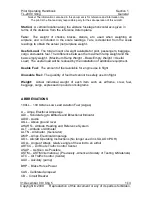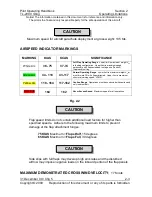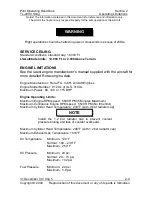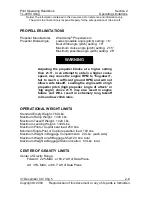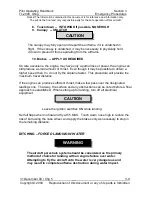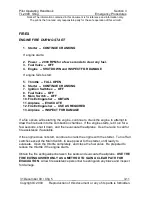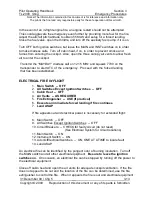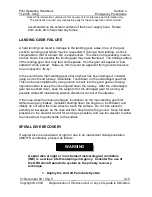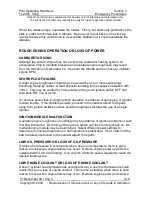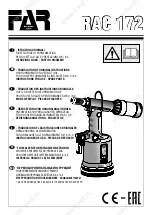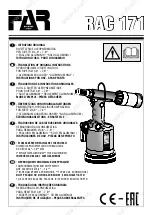
Pilot Operating Handbook
Section 3
TL-2000
Sting
Emergency Procedures
Notice! The information contained in this document is for reference and information only.
The pilot is the final and only responsible party for the safe operation of this aircraft.
31 December 09 / Chg 5
__
3-3
Copyright © 2009 Reproduction of this document or any of its parts is forbidden.
INTRODUCTION
Section 3 provides checklists and amplified information in the event of an emergency.
Abbreviated checklists for use in the aircraft are included in Section 10. Proper
preflight inspections and maintenance practices can help eliminate emergencies
caused by airplane or engine malfunctions. Emergencies caused by poor weather
conditions can be minimized or reduced by proper flight planning and using good
judgment when unexpected weather is encountered.
Should an emergency arise, the basic guidelines described in this section should be
considered and applied as necessary to correct the problem. Due to the fact that
emergencies can occur at any altitude or any moment, procedures to follow may
have to be suitably altered by the pilot in command in order to best cope with the real
time situation.
All
Sting
airplanes have an aircraft parachute system installed. This
system may be deployed at any time by the crew.
IF TIME PERMITS,
it
should generally be employed after all other efforts to recover the
aircraft have been exhausted. If deployment of the system is
necessary, consider deployment at the end of the checklist applicable to
the situation.
A completely stopped or wind-milling propeller will increase drag
on the airplane more than a propeller with the engine running at
idle. This will result in a higher sink rate and a shortened glide
distance. When engine-out procedures are simulated, aircraft glide
performance will not completely reflect true engine-out conditions.
The propeller will NOT windmill due to the engine gearbox during
engine out conditions even at high (140Kts) airspeeds.
NOTE
WARNING
NOTE

